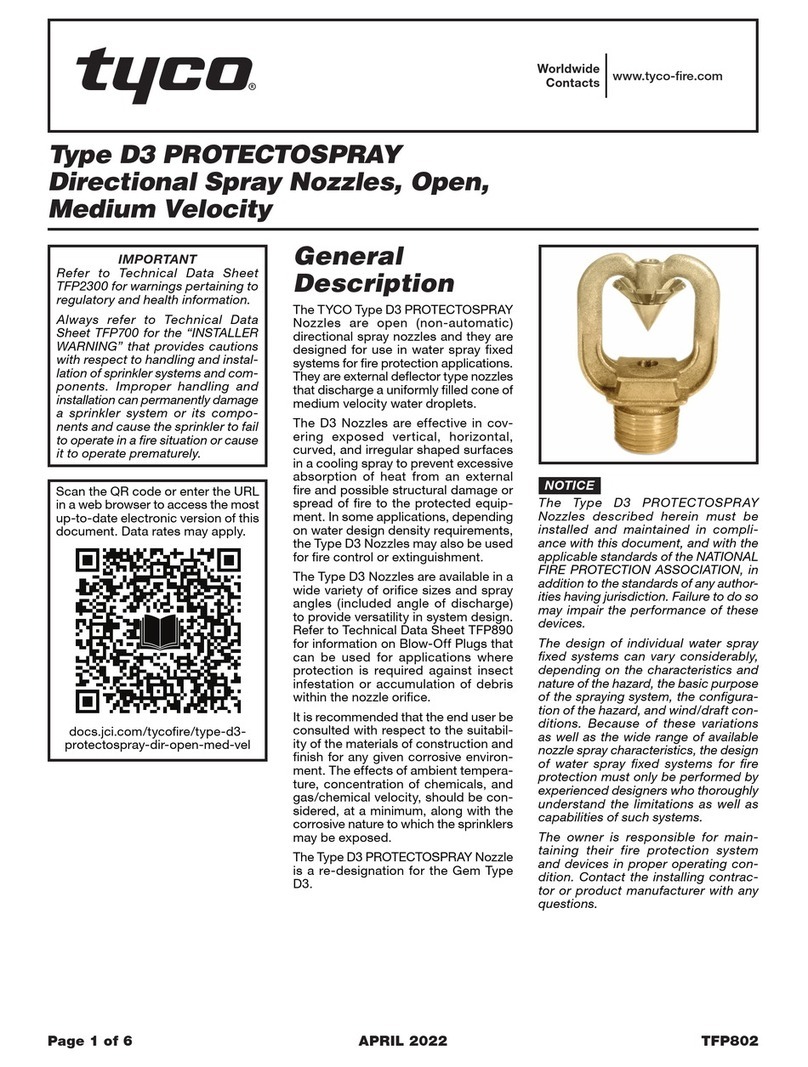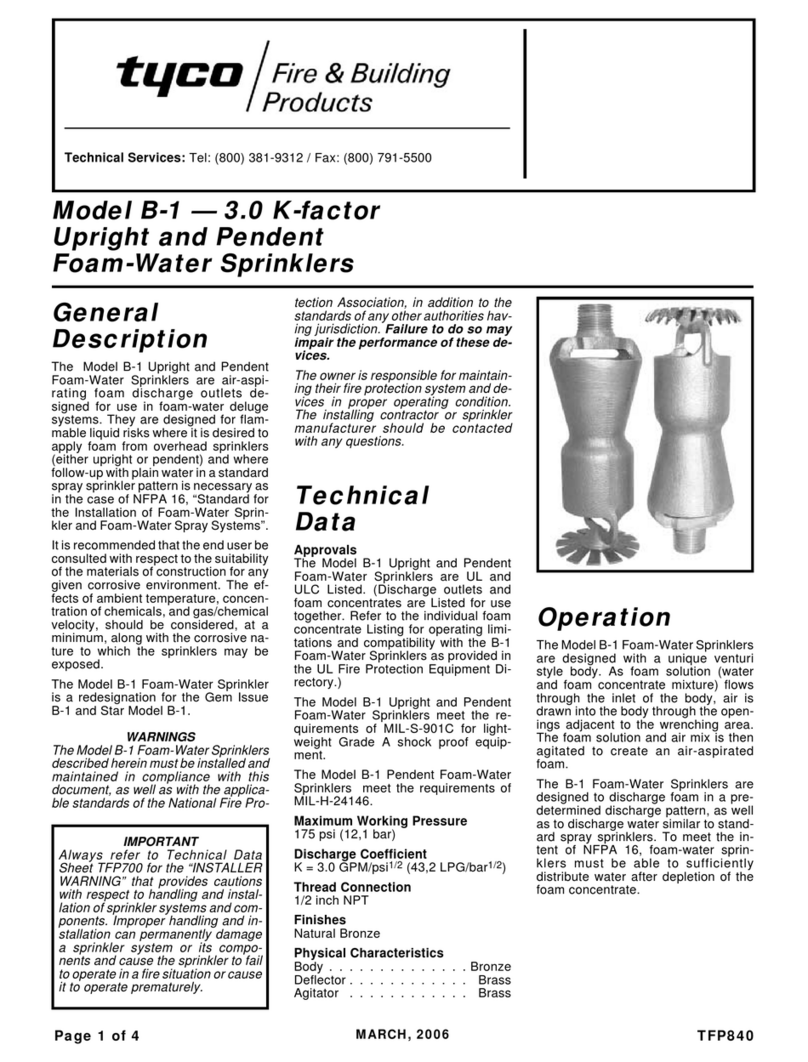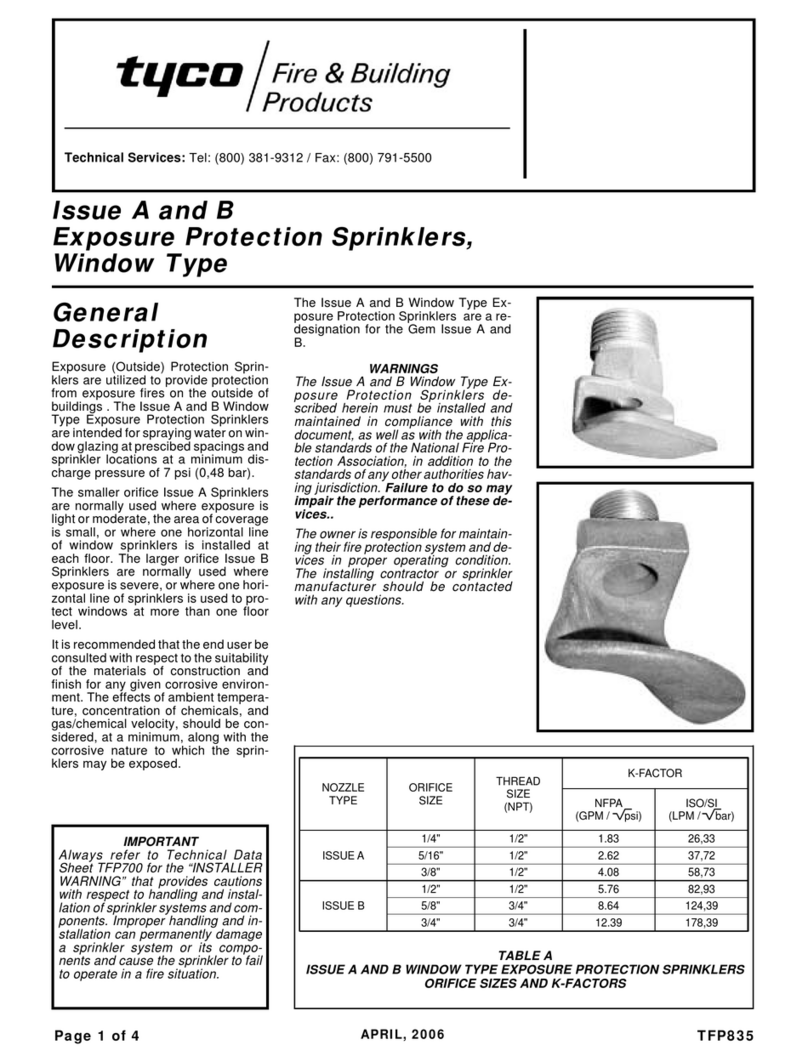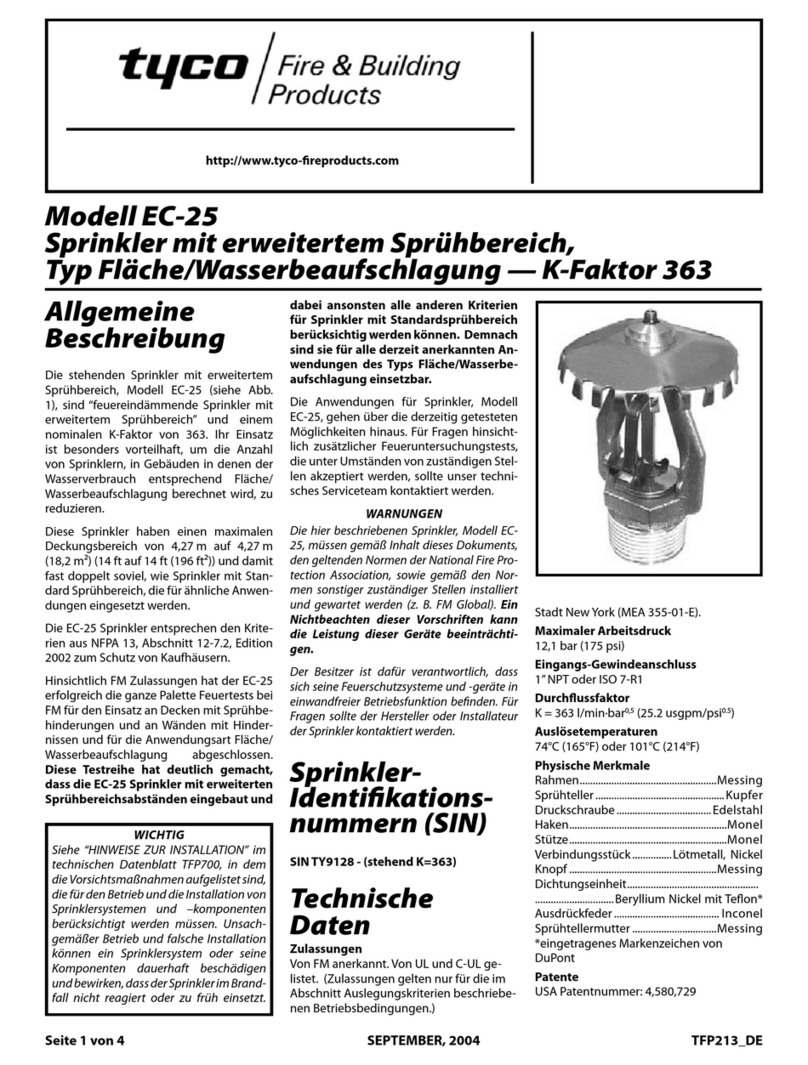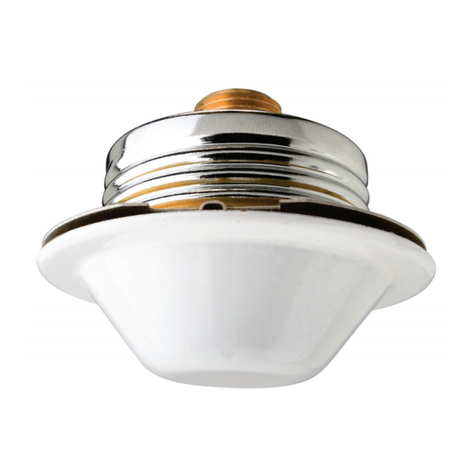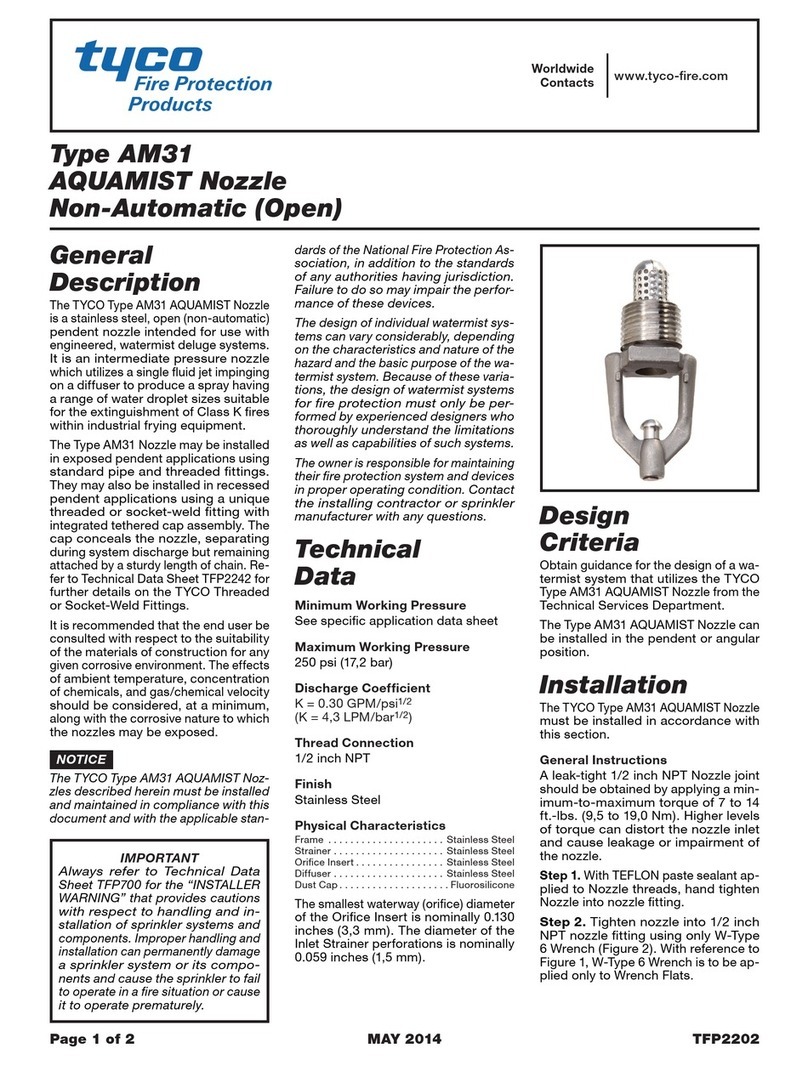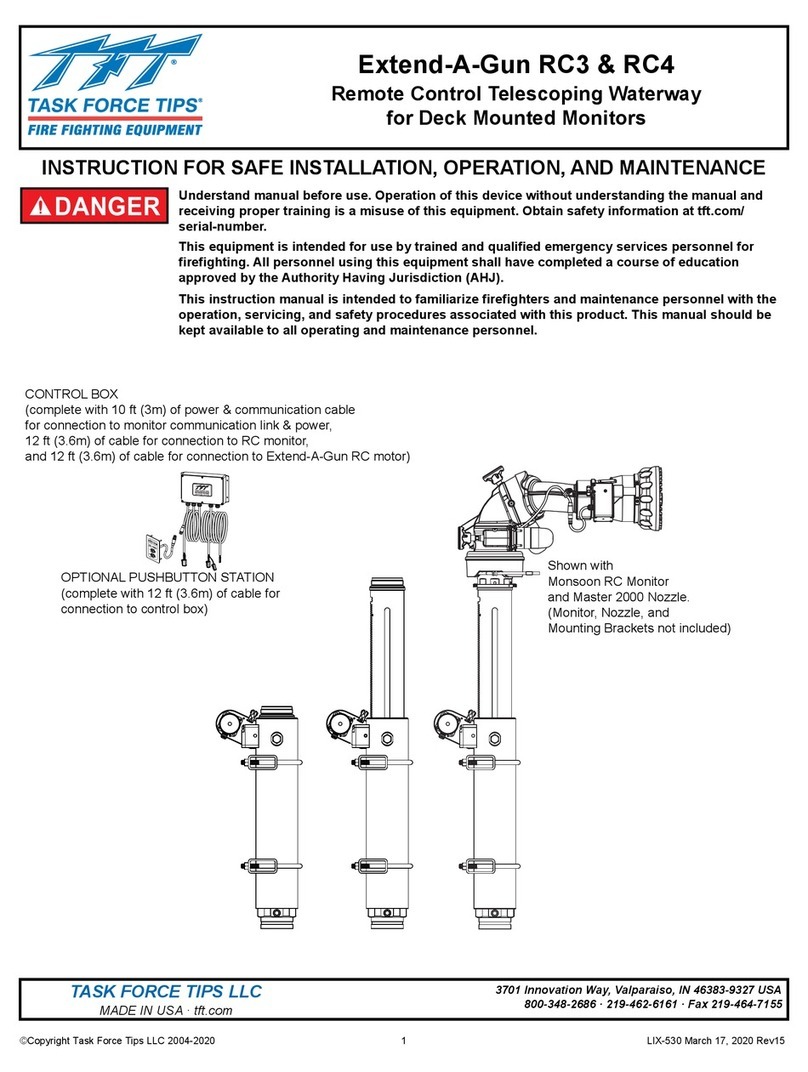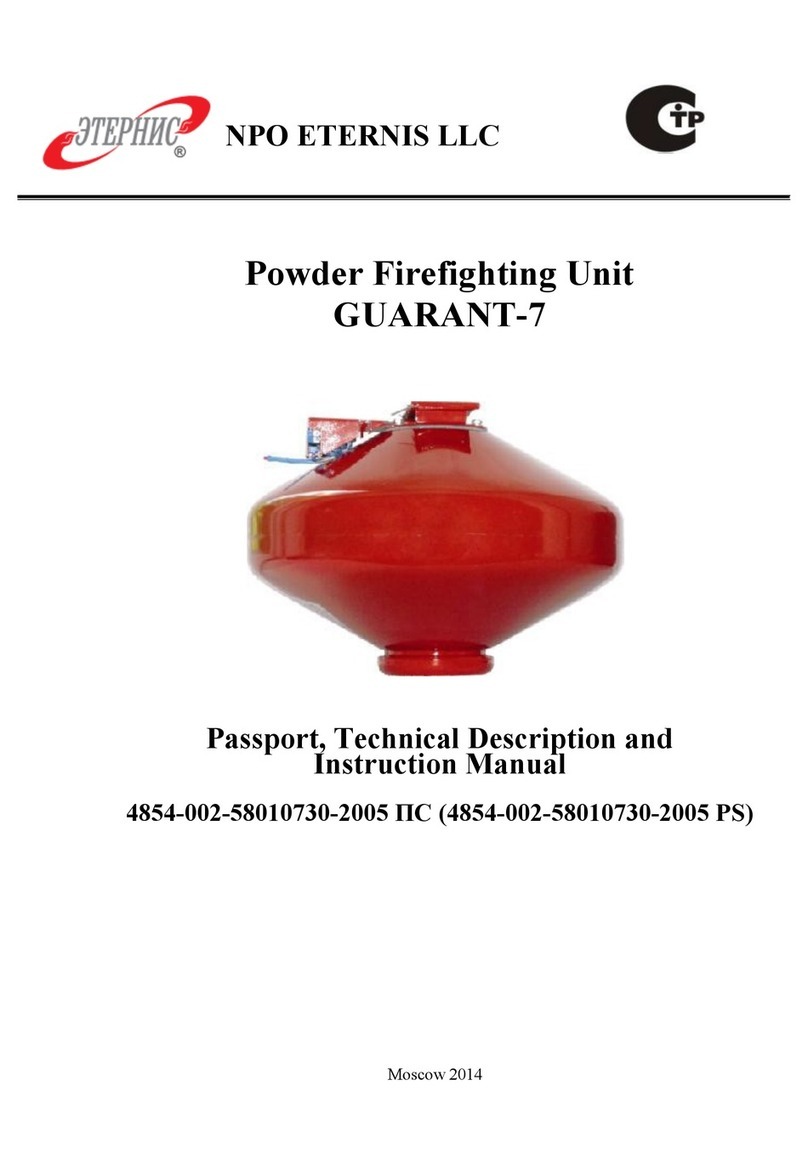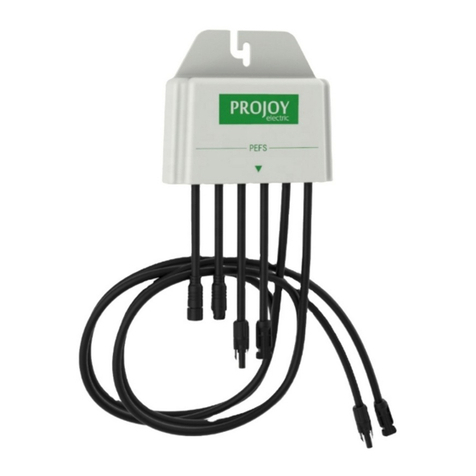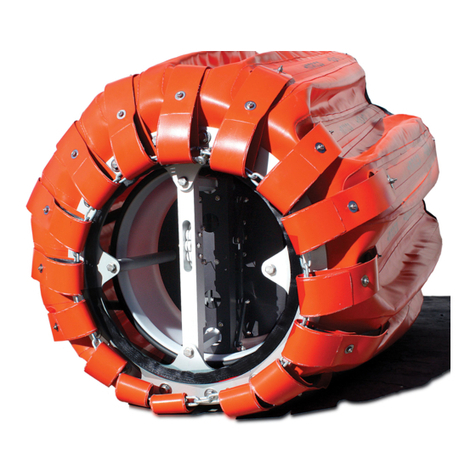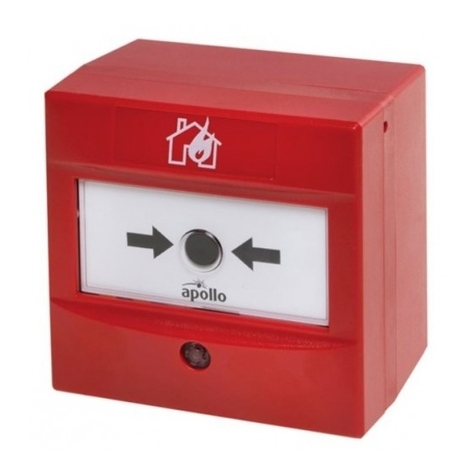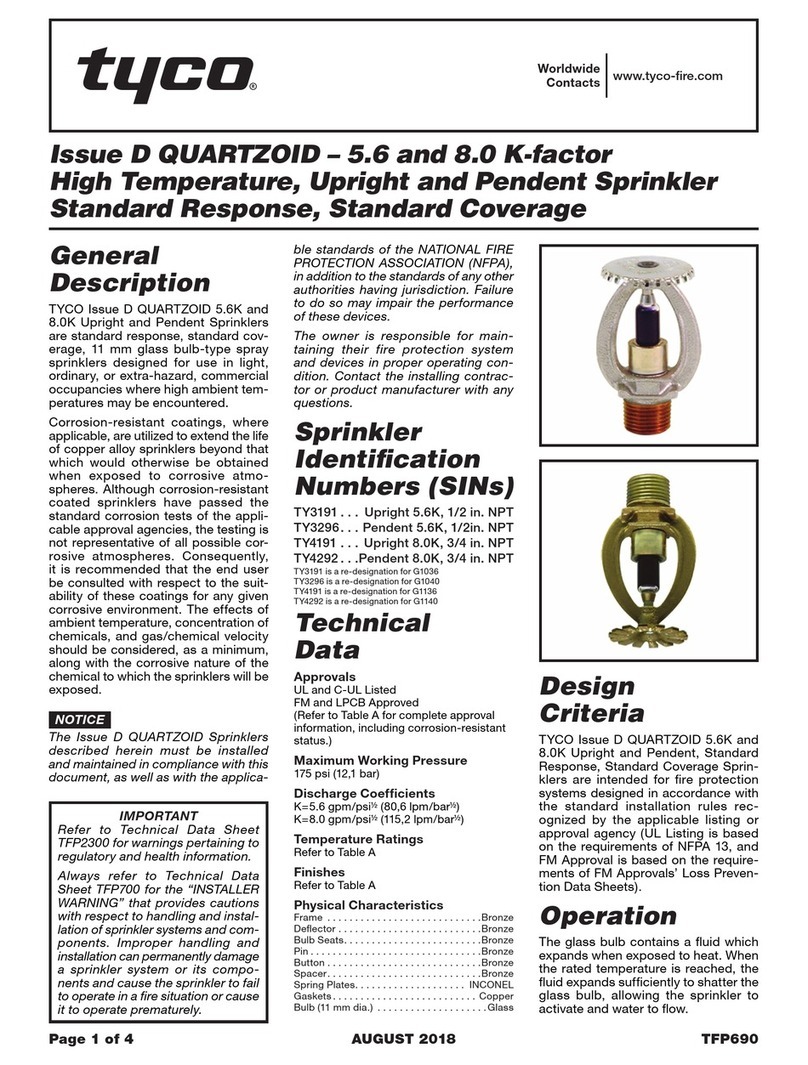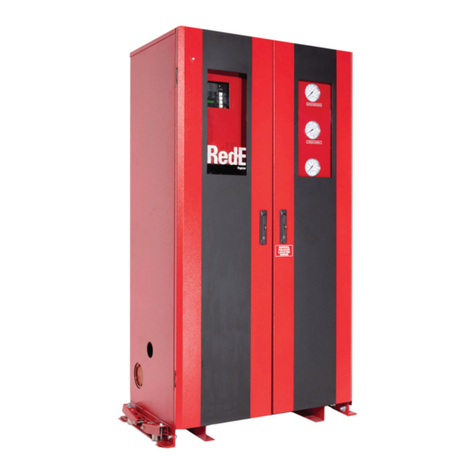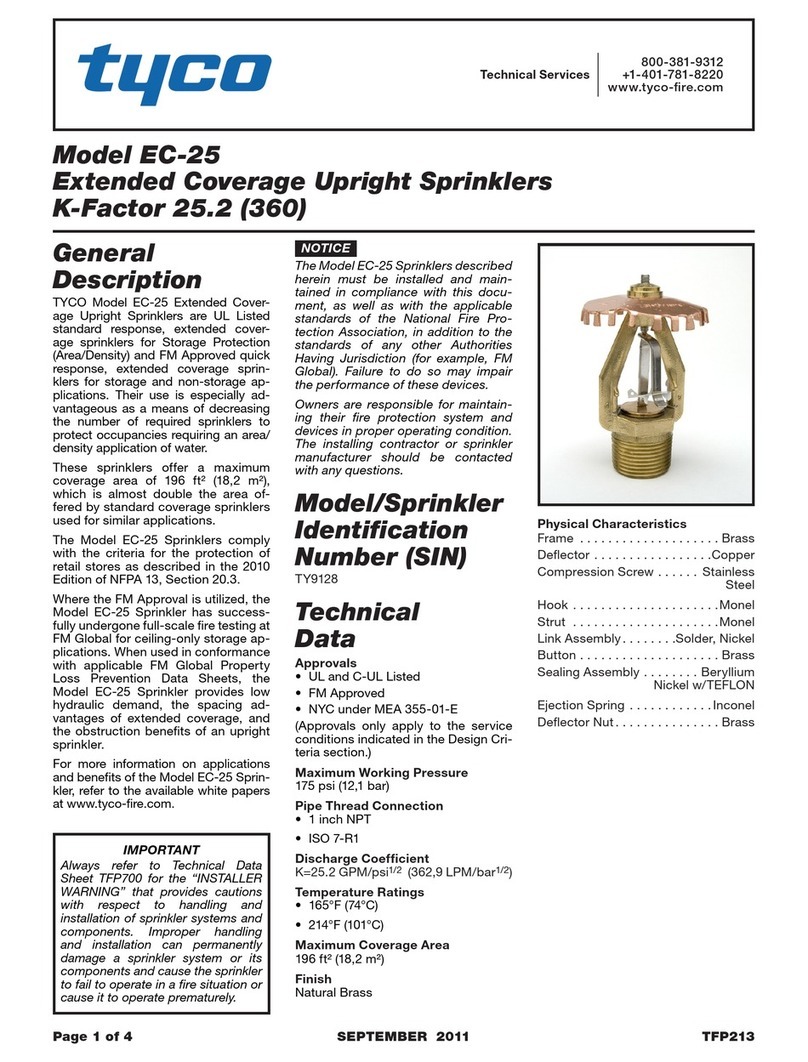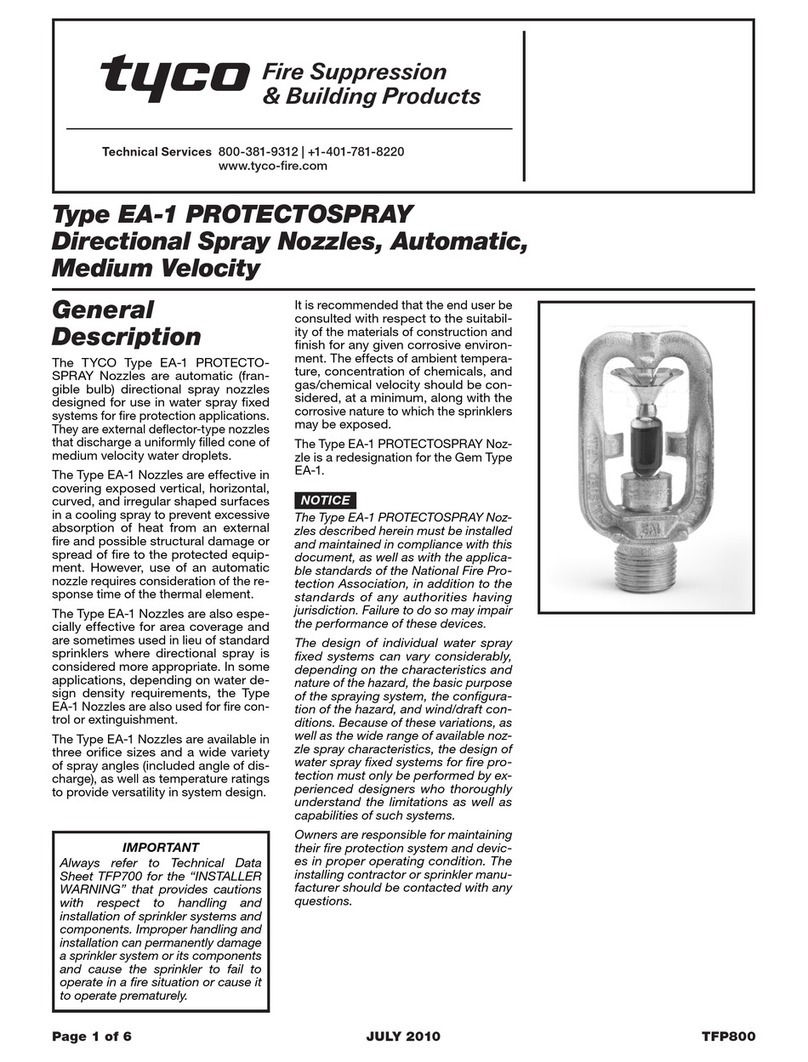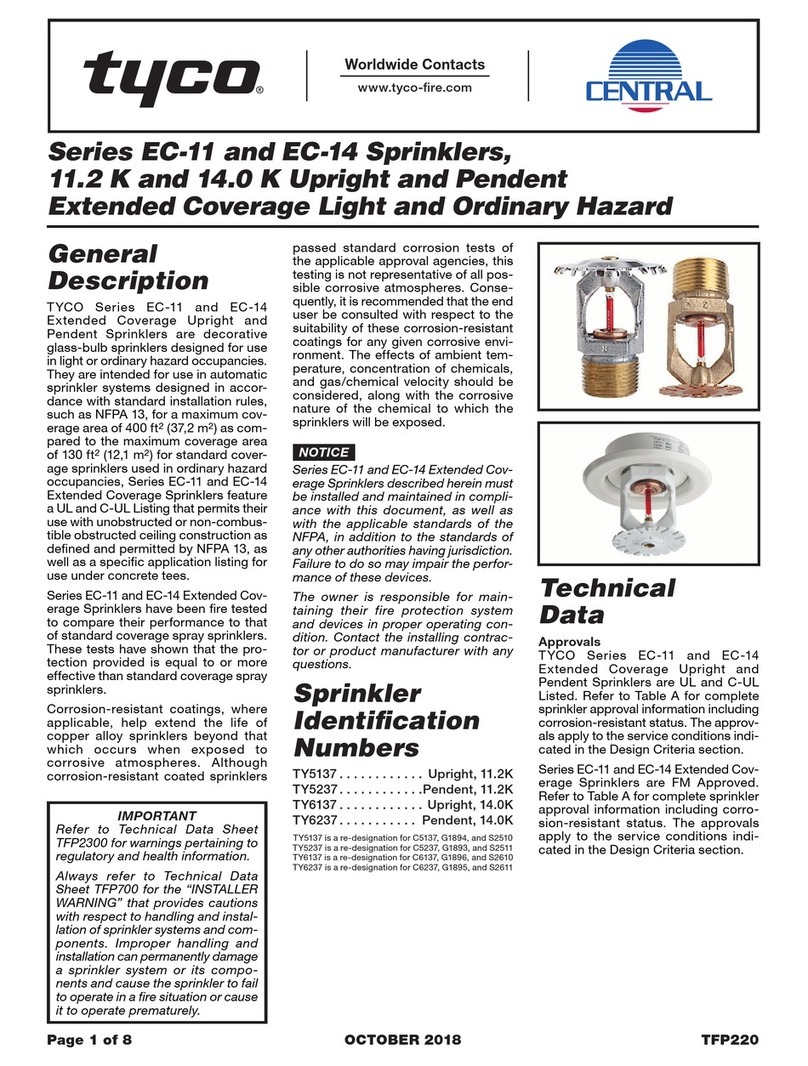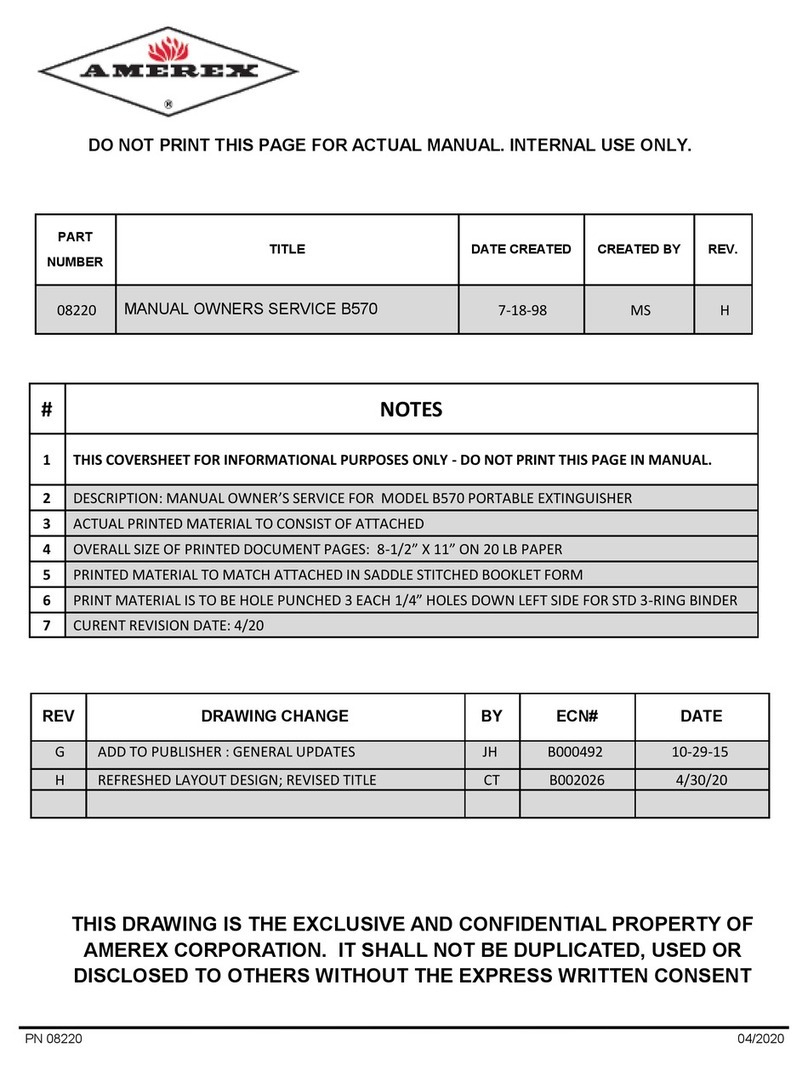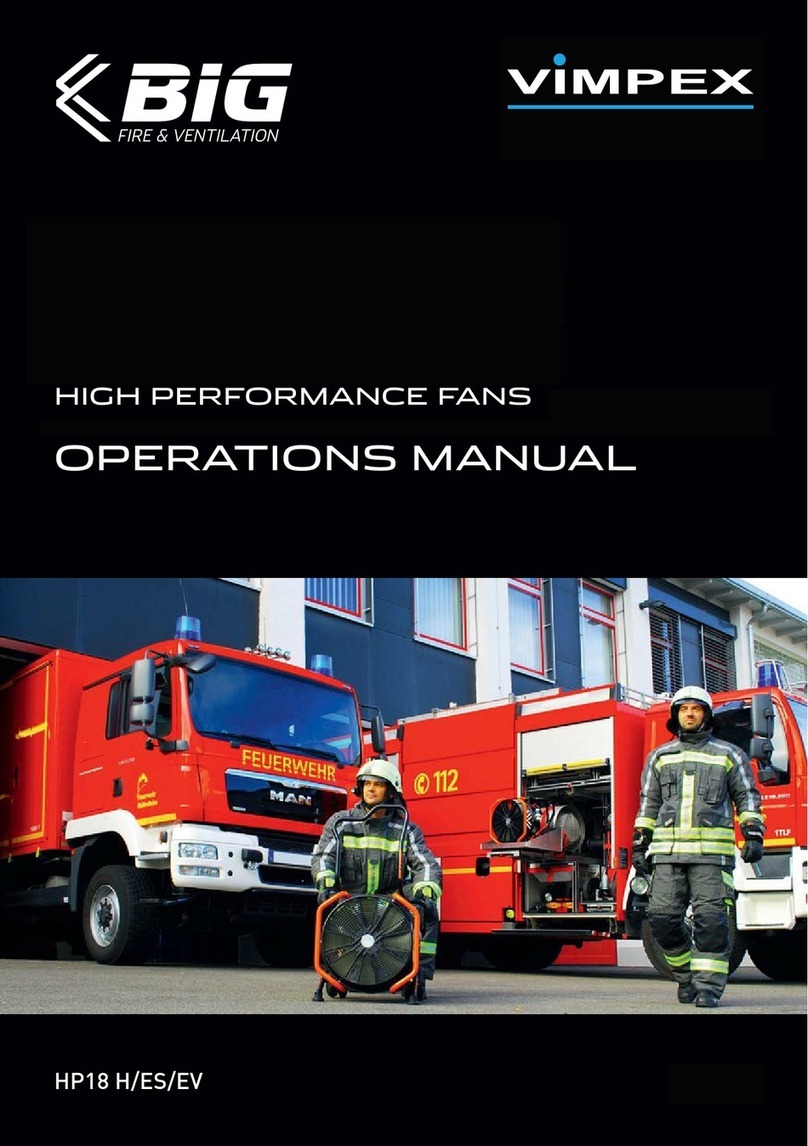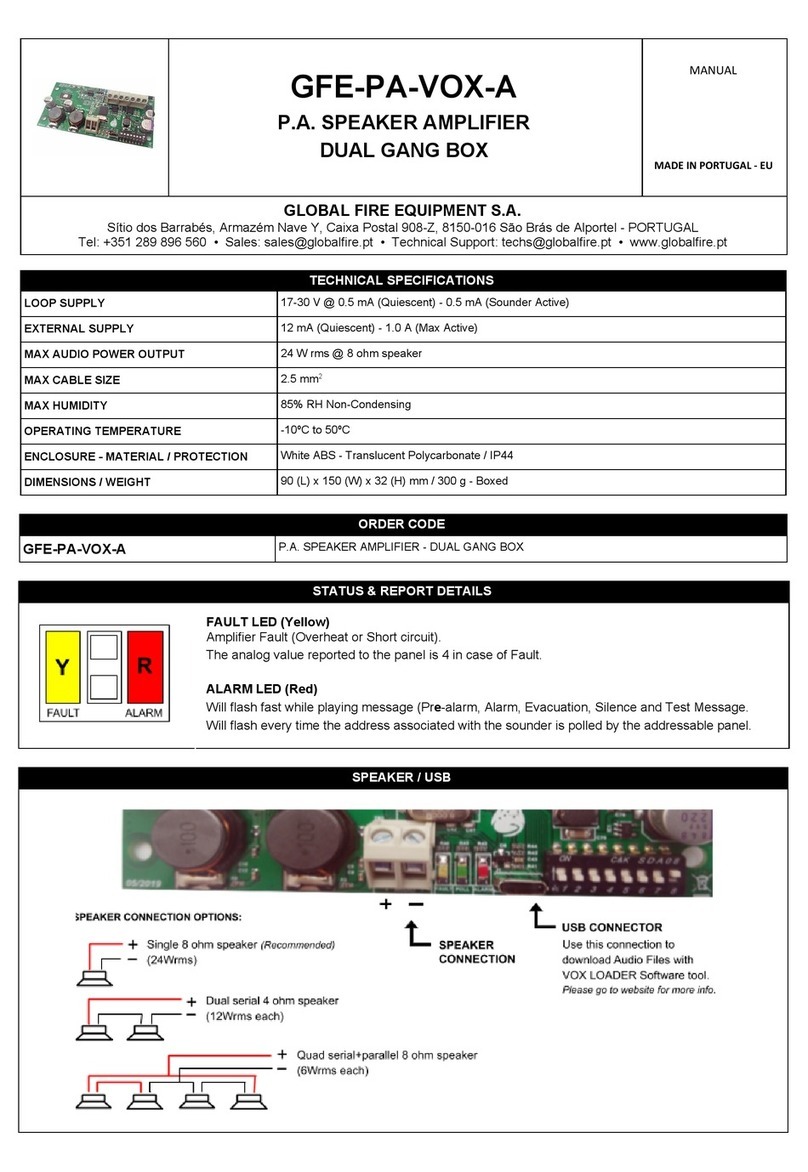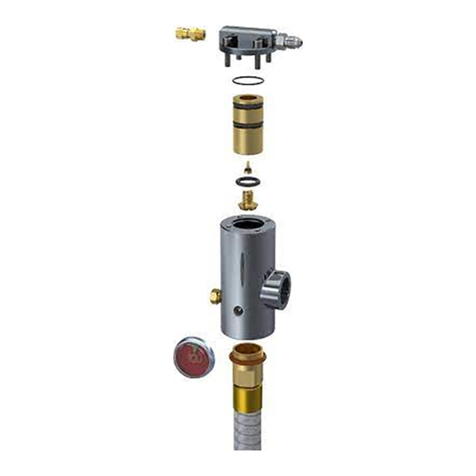
TFP980
Page 6 of 8
Installation
NOTICE
A fire sprinkler water supply connection
to a public water supply is usually subject
to local regulations concerning metering
and backflow prevention requirements.
Consult with the local water authorities
concerning local requirements that
may apply to the arrangement of these
components in the fire sprinkler system
water supply.
Figure 1 illustrates a typical instal-
lation arrangement using the TYCO
Model RSV-1 Residential Shut-Off
Valve. The arrangement may need to
be modied to meet the requirements
of the authority having jurisdiction.
However, the Model RSV-1 Valve must
be installed in accordance with the
following criteria.
Note: For the 1-Inch (DN25) Valve,
the maximum water supply service
line is 1-Inch (DN25).
1. Ensure that the water supply to the
Model RSV-1 Valve is free of contami-
nants and particles of a size greater
than 1/8 inch (3,2 mm).
2. Install the Model RSV-1 Valve verti-
cally with the Supply Port at the bot-
tom, the Fire Sprinkler Port at the top,
and the Domestic Port at the side.
Ensure that the arrows cast on the
Body point in the direction of ow.
A suitable clamp along the water
supply riser piping is recommended
to provide support for the weight of
the Model RSV-1 Valve.
3.
Place a Domestic Control Valve be-
tween the Model RSV-1 Valve and
the domestic system. Position the
inlet to the Domestic Control Valve
within 12 inches of the Domestic Port
of the Model RSV-1 Valve.
4.
The Drain and Flow Test Connection
(Figure 1) is recommended to be a
minimum 1/2 inch (DN15) size for
systems per NFPA 13D, and it must
be a minimum 1 inch (DN25) size for
systems per NFPA 13R.
5.
Install an Alarm Test Connection
with a test orice equal to or less
than the smallest K-factor sprinkler
in the system downstream of the
Waterow Detector.
6.
Apply pipe-thread sealant sparingly
only to the male pipe threads that are
to be assembled to the three ports of
the Model RSV-1 Valve. The use of a
non-hardening pipe-thread sealant
such as Teon* is recommended.
Valve Setting
Procedure
Perform steps 1 through 9 when initial-
ly lling the re sprinkler and domestic
system piping with water or after a re
sprinkler operation (Figure 1).
1. Close the Main Control Valve.
2.
Close the Domestic Control Valve
and all water outlets in the domestic
piping system.
3.
In addition to the Drain and Flow
Test Connection in the re sprinkler
system, close all drain valves and
replace all operated sprinklers as
necessary.
4.
Partially open the Main Control Valve
until the sound of owing water just
begins, then leave the Main Control
Valve in the partially open position.
5. After the re sprinkler system pres-
sure gauge indicates approximately
the same pressure as the supply
pressure gauge, fully open the Main
Control Valve.
6.
Open the highest elevation outlet on
the domestic system.
7.
Partially open the Domestic Control
Valve until the sound of owing water
begins. Allow the domestic piping to
ll slowly with water.
8.
Close the highest elevation water
outlet on the domestic system when
unaerated water begins to ow.
9.
Completely open the Domestic Control
Valve, then check that the domestic
system is properly pressurized by
verifying that at least three water
outlets in the domestic system can
ow full at the same time.
•
If the water outlets ow fully, the
Model RSV-1 Valve is set and ready
for service. Close the water outlets
on the domestic system.
•
If the water outlets do not ow
fully, re-close the Domestic Con-
trol Valve, wait a minimum of ten
seconds, and ensure that there is
no ow from the re sprinkler sys-
tem piping. Reopen the Domestic
Control Valve, then recheck that
the water outlets are owing fully.
Care and
Maintenance
The following inspection procedure
for the TYCO Model RSV-1 Residential
Shut-Off Valve must be performed as
indicated, in addition to any specic
requirements of the NFPA. Any impair-
ment must be immediately corrected.
NOTICE
Make no attempt to repair any Model
RSV-1 Valve component in the field. The
Model RSV-1 Valve is not field-repairable.
If malfunction occurs, the entire unit
must be replaced.
The operational test and flow test
procedures result in operation of
the associated alarms, as well as an
interruption of the domestic water
supply service. You must notify the
owner, building occupants, and the fire
department, central station, or other
signal station to which the alarms are
connected.
Before closing a fire protection system
control valve for inspection or maintenance
work on the fire protection system that
it controls, obtain permission to shut
down the affected fire protection system
from the proper authorities and notify
all personnel who may be affected by
this action.
After placing a fire protection system in
service, notify the proper authorities and
advise those responsible for monitoring
proprietary and/or central station alarms.
Responsibility lies with the owner for
the inspection, testing, and mainte-
nance of their re protection system
and devices in compliance with this
document, as well as with the appli-
cable standards of the National Fire
Protection Association (for example,
NFPA 25), in addition to the standards
of any authority having jurisdiction.
Contact the installing contractor or
product manufacturer regarding any
questions.
Automatic sprinkler systems are rec-
ommended to be inspected, tested,
and maintained by a qualied Inspec-
tion Service in accordance with local
requirements and/or national codes
and standards.
*DuPont Registered Trademark



